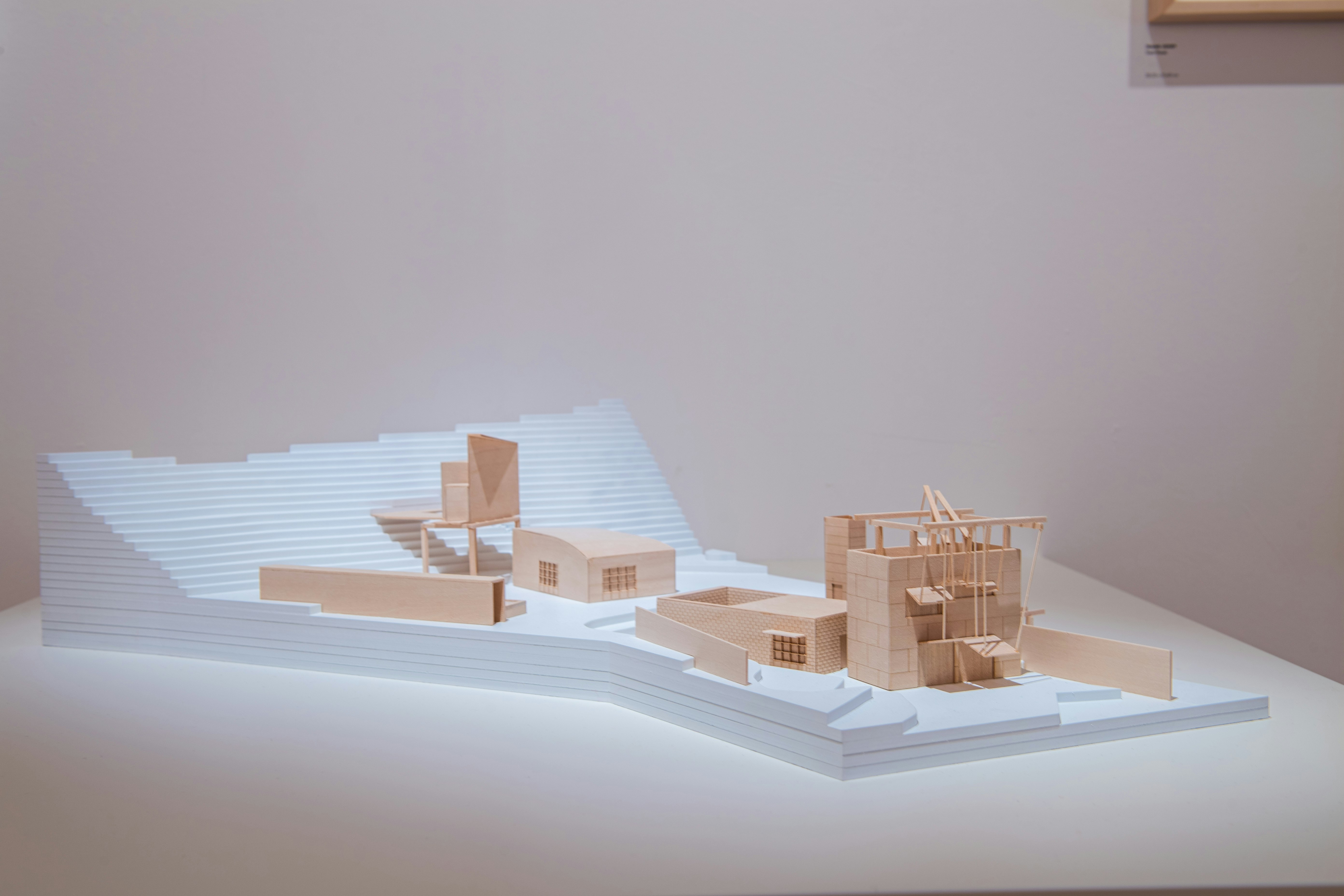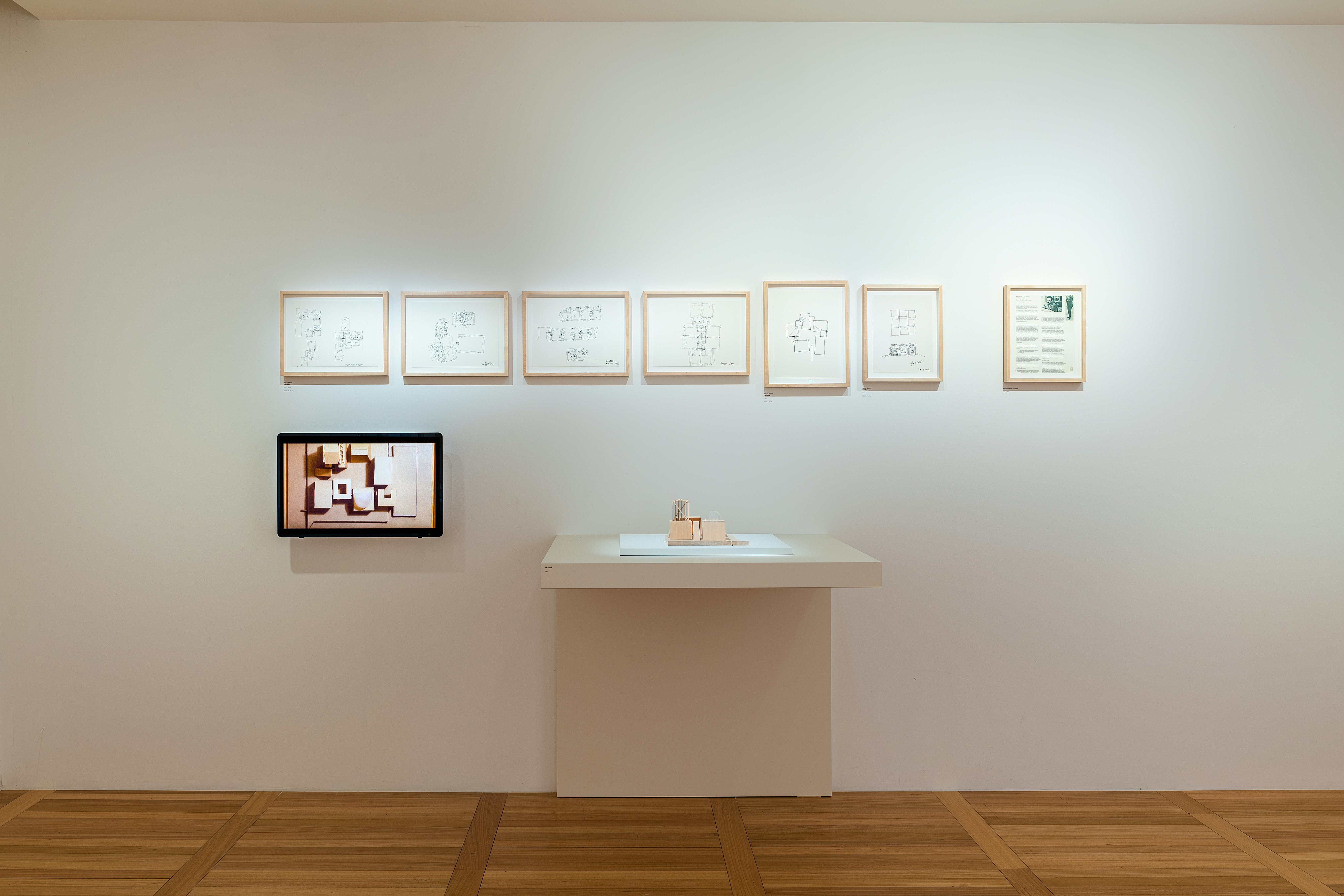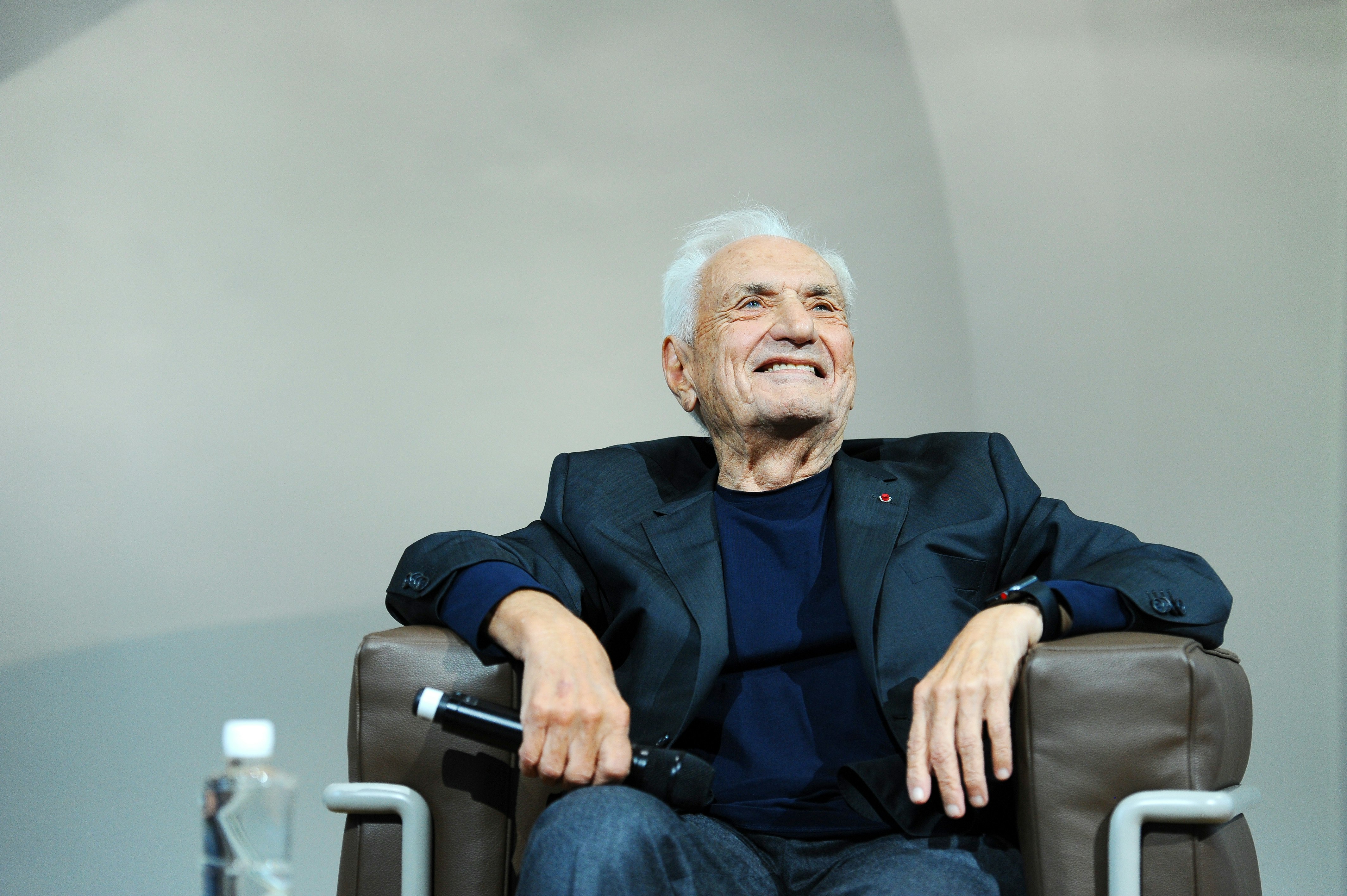Charlotte Perriand and I

Charlotte Perriand - La Maison au bord de l'eau - Exhibition view at Espace Louis Vuitton Venezia 2021 © Louis Vuitton Malletier © Adagp, Paris 2021 - Photo credits © Daniele Nalesso/Louis Vuitton
- Date
- From 22.05.2021 to 21.11.2021
- Place
-
Espace Louis Vuitton Venezia
-
Calle del Ridotto, 1353 30124
-
Venise – Italie
- Phone
-
Tél. +39 041 8844318
Converging designs by Frank Gehry and Charlotte Perriand
Collateral Event of the 17th International Architecture Exhibition – La Biennale di Venezia
The Espace Louis Vuitton Venezia is pleased to announce the opening of its new exhibition, confronting the foundational works of eminent architects Charlotte Perriand and Frank Gehry. As part of the 17th International Architecture Exhibition – La Biennale di Venezia, this presentation has been produced in the framework of the Fondation Louis Vuitton “Hors-les-murs” programme.
This programme, inaugurated in 2014, presents the international projects of the Fondation in the Espaces Louis Vuitton in Tokyo, Venice, Munich, Beijing, Seoul and Osaka, making them accessible to a broader public.
Over the past century, developments in technology have increased the frequency with which we have reimagined the home. Technological advancements, together with changing social values, enabled architects to invent new solutions for the way we live. From industrial to digital technologies, each era has brought forth promises of architecture’s capacity to embody the times by embracing these innovations. Today, amidst an ecological crisis of our own making, we are attempting to house an unprecedented global population within boundaries that are in flux. The Espace Louis Vuitton Venezia presents the work of Charlotte Perriand and Frank Gehry as both historical references and as viable solutions for the issues confronting us today.

Frank Gehry - House for a film maker
© Daniele Nalesso / Louis Vuitton
Two of the projects are exhibited for the first time - Perriand’s Tritrianon project (1937) and Gehry’s Power Pack project (1969).
In their respective times, Perriand and Gehry responded to the ideas of mobility, prefabrication, and efficiency and put forth ideas that redefined the home. At the onset of the last century, modernism took advantage of industrialization to reframe housing as an industrial process. Arguing for improved qualities of life and hygiene, modernist architects used industrial materials to form a new vision of the built environment. From 1934 to 1938, Perriand designed “minimum dwellings” based on modular assemblies that could be mass produced and efficiently constructed. These projects were designed to have a minimal impact on their surroundings, while providing the essential amenities for dwelling. Perriand’s understanding of ergonomics, enabled her to design compact spaces that could accommodate the full range of human positions. Simple and elegant, they were to be built with standardized elements within a system of prefabricated modules. Lightweight, they could be moved and reassembled from one location to another.

Charlotte Perriand "Le Refuge Tonneau"
© Adagp, Paris 2021 - Photo credits © Daniele Nalesso / Louis Vuitton

Frank Gehry "Tract House"
© Daniele Nalesso / Louis Vuitton
The innovations of the space race of the 1960s, enabled increasingly compact and efficient systems for life in space. In 1969, Gehry proposed a transportable self-sufficient dwelling unit. The project envisioned a separation of the “mechanical, electrical, and waste disposal system” from the “shelter.” With the potential to be run on batteries or a single power source, Gehry called the support structure a “power pack.” The architect could design the shelter to suit any taste or housing type, but the power pack could be a constant. Although the idea for the power pack remained an idea, his conceptual separation of the functions of the home into independent rooms, enabled Gehry to initiate his experiments in housing design of the 1970s and ‘80s.
In the context of today’s ecological consciousness, “minimum dwellings” and power pack are precursors to current innovations in independent energy collection and consumption. Their ambition to connect improbable utopian futures with concrete solutions is especially relevant to the real and urgent problems confronting architecture today.
Frank Gehry
Raised in Toronto, Canada, Frank Gehry moved with his family to Los Angeles in 1947. He received his Bachelor of Architecture degree from the University of Southern California in 1954 and studied City Planning at the Harvard University Graduate School of Design before opening his own agency in Los Angeles in 1962.
In subsequent years, Gehry has built an architectural career that has spanned over six decades and produced public and private buildings in America, Europe and Asia. His work has earned Gehry several of the most significant awards in the architectural field, including the Pritzker Prize. Notable projects include Guggenheim Museum in Bilbao, Spain; Walt Disney Concert Hall in Los Angeles, California, USA; Eight Spruce Street Residential Tower in New York City, USA; Opus Residential Tower in Hong Kong; Fondation Louis Vuitton in Paris, France; the Dr. Chau Chak Wing Building for the University of Technology, in Sydney, Australia; the Louis Vuitton Maison Seoul, South Korea; the LUMA / Parc des Ateliers in Arles, France. Projects under construction include Philadelphia Museum of Art in Philadelphia, Pennsylvania, USA; Facebook Campus in Menlo Park, California, USA; the Grand Avenue Project in Los Angeles, California, USA; a new centre for the Youth Orchestra Los Angeles (YOLA) in Inglewood, California, USA; the Dwight D. Eisenhower Memorial in Washington D.C., USA; and the Battersea Power Station Development in London, England.
He died on December 5, 2025 in Santa Monica, California.

Charlotte Perriand
Charlotte Perriand was born on 24 October 1903 in Paris. She studied at the École de l'Union Centrale des Arts Décoratifs from 1920 to 1925. Two years later, she began working as an interior designer, based at her studio on Place Saint-Sulpice. Her research and interest in furniture design led her to collaborate with Le Corbusier and Pierre Jeanneret in the 1920s and 1930s. During this time she worked on major projects including the Villa Church, the Villa Savoye, the Cité du Réfuge for the French Salvation Army, and the Pavillon Suisse at the Cité Universitaire.
A few years later, Perriand helped to found the Union des Artistes Modernes (UAM), and in 1933 she embarked on a photographic research project on the theme of Art Brut, in collaboration with Fernand Léger and Pierre Jeanneret. She focused on objects found in nature, which she photographed in situ or in her studio in Montparnasse.
In 1934 she began specialising in pre-fabricated buildings for leisure pursuits, including the Maison au Bord de l'Eau, as well as hotels and mountain shelters.
In 1940 Perriand was appointed as the official advisor on industrial design to the Japanese government, and left for Tokyo, returning to France in 1946. All her work thereafter would display a Japanese influence. Major projects followed, notably for Air France (1957-1963) and the Musée National d’Art Moderne in Paris (1963-1965). Perriand’s work has been the subject of many exhibitions, highlighting her "synthesis of the arts" and her singular vision.
She died on 27 October 1999 in Paris.

David Nam
David Nam received a Bachelor of Architecture degree from Cornell University in 1996 and a Master of Architecture degree from Yale University in 2006. While in college, he interned at Gehry Partners and joined the office from 1996-2002.
Following his graduate studies, he worked in Rotterdam, The Netherlands, for The Office for Metropolitan Architecture from 2006-2007. He returned to Gehry Partners in 2007, where he has worked directly with Frank Gehry.
As a Design Partner, Nam has overseen the design of several cultural, commercial, and residential projects throughout Europe, Asia, and North America, including the recently opened Louis Vuitton Maison in Seoul, South Korea, and the LUMA / Parc des Ateliers in Arles, France. He has also designed exhibitions for the Centre Pompidou, Paris, France; the Los Angeles County Museum of Art, California, USA; and the Fondation Louis Vuitton.

